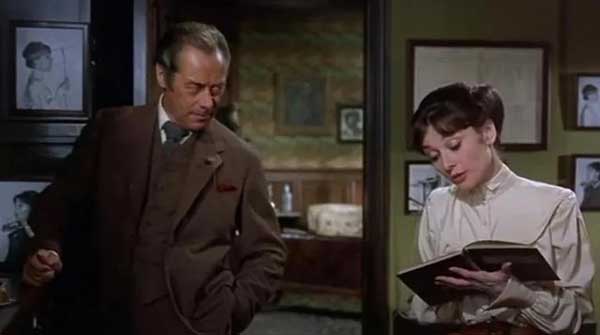Unfortunately, nothing lasts forever
 Roadshow movies were once a thing, particularly in the 1960s. And certain characteristics defined the genre.
Roadshow movies were once a thing, particularly in the 1960s. And certain characteristics defined the genre.
You could reserve seats in advance; tickets were pricier than the norm; and the films were longer than usual, thus facilitating an intermission that mimicked the live theatrical experience.
While it didn’t quite have live theatre’s cachet, the roadshow movie enjoyed some practical advantages. It was less expensive, there were no bad sight lines, and you’d never have difficulty hearing the dialogue.
Unsurprisingly, a natural synergy existed between the genre and the penchant for transferring Broadway musicals to the screen. It was as if they were made for each other.
A couple of examples illustrate the point.
 |
| More in Entertainment |
| Netflix’s ‘Ancient Apocalypse’ is more fiction than fact
|
| Swashbucklers on the silver screen
|
| A true story that inspired a classic western movie
|
My Fair Lady (1964)
Based on George Bernard Shaw’s 1913 play Pygmalion, it tells the story of a cockney flower girl who becomes the personal project of an arrogant professor. Teaching her how to speak “proper English,” he manages to pass her off in high society as a “lady of breeding.” He regards this as a great triumph.
Alan Jay Lerner and Frederick Loewe had collaborated on their first hit – Brigadoon – in 1947. But they found that adapting Shaw for the musical stage was a tough nut to crack. Eventually, it opened on Broadway as My Fair Lady in 1956, featuring Rex Harrison as the pompous professor, the young Julie Andrews as the flower girl and English music hall veteran Stanley Holloway as her ne’er-do-well father. It was a huge success.
Harrison’s portrayal of Professor Henry Higgins was the star turn.
Lerner, who created the Higgins character, found the actor’s interpretation so powerful that every subsequent male role he wrote initially tended to sound like Harrison. Or maybe, as Canadian author and radio and television presenter Mark Steyn suggests, it was partly a matter of the character reflecting a hitherto submerged aspect of Lerner’s inner self.
And there was also the innovation in vocal style.
Harrison reputedly had “a vocal range of one and a half notes,” which made improvisation necessary. So turning a liability into an asset, he used his resonantly rich actor’s voice to develop a declaratory technique of half-talking his way through songs. It was spectacularly effective.
The Hollywood version premiered in October 1964 and ran 170 minutes. Both critics and the general public liked it. And Harrison scored a personal career highlight as his depiction of “urbane, charming misogyny” nabbed a Best Actor Academy Award. You could say that he owned the screen whenever he was on it, which was a lot.
Oliver! (1968)
Born in London’s East End, Lionel Begleiter came from a family of Galician Jews who’d fled Cossack pogroms in what is now Poland. As Lionel Bart, he evolved into one of the most important British theatrical figures of the 20th century.
His initial foray into the music business came via the pre-Beatles British rock ‘n’ roll scene. Penning a string of hits between 1956 and 1962, he could be fairly described as the scene’s pre-eminent songwriter. His true passion, however, lay elsewhere. He wanted to write for the theatre.
Unlike, say, Lerner and Loewe or Rodgers and Hammerstein, Bart preferred to do it all himself – script, lyrics and music. He was also keen on spontaneity. When his theatrical breakthrough – Oliver! – went into rehearsal, he said he only had six songs ready. The final score boasted 16.
Based on Charles Dickens’ famous 19th-century novel Oliver Twist, Bart’s show debuted in London’s West End on June 30, 1960, and went on to run for 2,618 performances. It caused a sensation, not just technically – because of the leading edge sets – but also due to its out-and-out Englishness.
There was also some sanitization.
Whereas the Fagin character in the Dickens novel had sometimes been chided as an antisemitic stereotype, the actor Ron Moody – himself Jewish – insisted on playing him as a comic turn rather than a villain. If that contributed to sentimentalizing Dickens’ original tone, so be it. Audiences loved it.
After its later Broadway run, the show was turned into a highly successful film. Interestingly, there was no attempt to Americanize any aspect or import anyone with a significant movie star profile. The performers were all British, Moody reprised Fagin and it won an Academy Award for Best Picture.
As the decade wound to a close, both roadshows and film musicals lost some of their lustre. Ample financing often morphed into bloated excess, suitable raw material became scarcer, and audiences found other things to amuse them.
In the world of popular culture, nothing remains the same.
Pat Murphy casts a history buff’s eye at the goings-on in our world. Never cynical – well, perhaps a little bit.
For interview requests, click here.
The opinions expressed by our columnists and contributors are theirs alone and do not inherently or expressly reflect the views of our publication.
© Troy Media
Troy Media is an editorial content provider to media outlets and its own hosted community news outlets across Canada.

